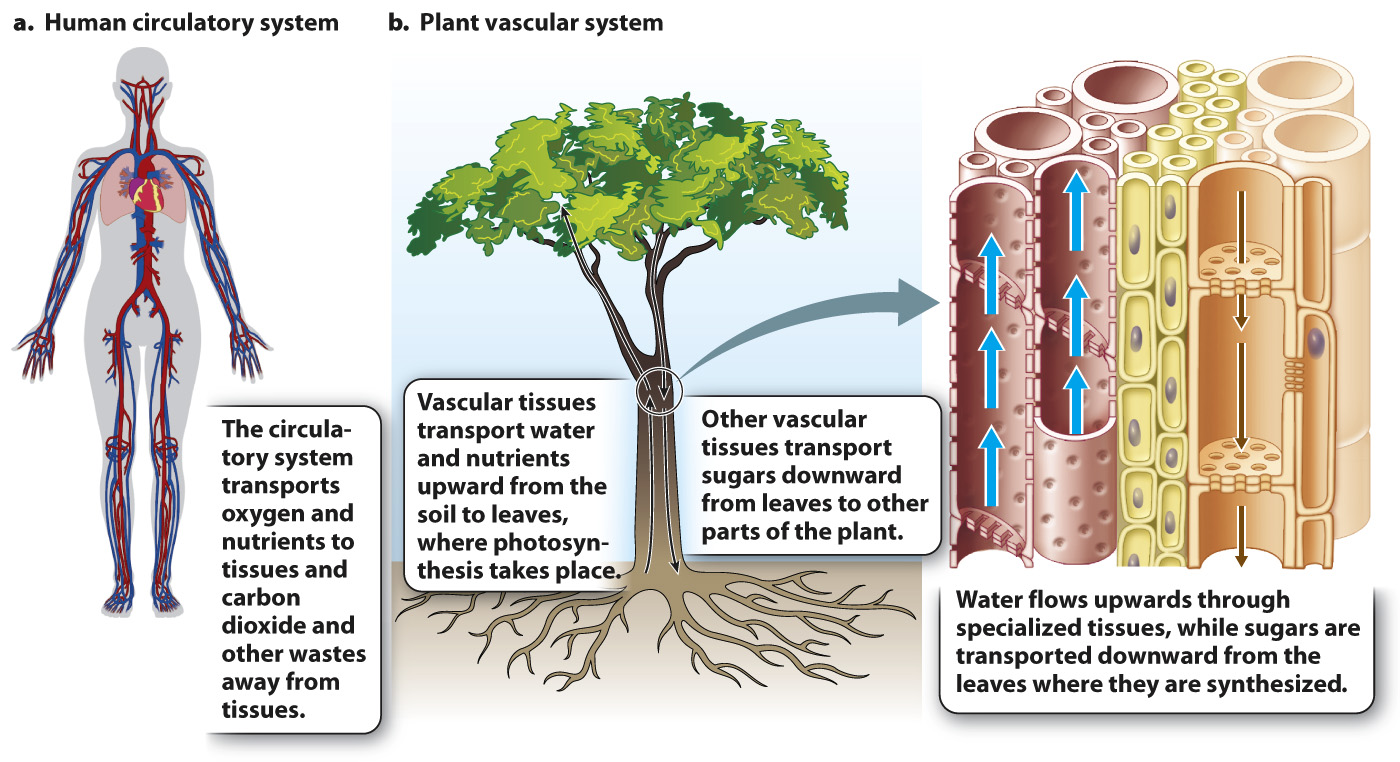Complex multicellular organisms have structures specialized for bulk flow.
We have seen how humans circumvent the limitations of oxygen diffusion. Many other animals similarly rely on the active circulation of fluids to transport oxygen and other essential molecules, including food and molecular signals, across distances far larger than those that could be traversed by diffusion alone. Indeed, without a mechanism like bulk flow, animals could not have achieved the range of size, shape, and function familiar to us.
Bulk flow is any means by which molecules move through organisms at rates beyond those possible by diffusion across a concentration gradient (Fig. 28.6). In humans and other vertebrate animals, the active pumping of blood through blood vessels supplies oxygen to tissues that may be more than a meter distant from the lungs (Fig. 28.6a). Most invertebrate animals lack well-

Bulk flow also distributes nutrients through the body, transporting the organic molecules required for respiration large distances from the intestinal cells that absorb these molecules from the digestive tract. (Again, the molecules are transported actively in the bloodstream.) Endocrine signaling molecules such as hormones (Chapters 9 and 38) also move rapidly through the body by means of the blood and other fluids.
Complex organisms other than animals also rely on bulk flow. A redwood tree must transport water upward from its roots to leaves that may be 100 m above the soil. If plants relied on diffusion to transport water, they would be only a few millimeters tall. How, then, do they move water? Plants move water by bulk flow through a system of specialized tissues powered by the evaporation of water from leaf surfaces (Fig. 28.6b; Chapter 29). Vascular plants also have specialized tissues for the transport of nutrients and signaling molecules upward and downward through roots, stems, and leaves.
Still other complex multicellular organisms also have specialized tissues to transport essential materials over long distances at rates faster than could be accomplished by diffusion. Fungi transport nutrients through networks of filaments that may be meters long, relying on osmosis to pump materials from sites of absorption to sites of metabolism (Chapter 34). The giant kelps have an internal network of tubular cells that transports molecules through a body that can be tens of meters long. We will discuss the biology of plants, fungi, and animals in subsequent chapters. For now, it is important to understand the functional similarities among these diverse multicellular organisms. In general, when some cells within an organism are buried within tissues, far from the external environment, bulk flow is required to supply those cells with molecules needed for metabolism.
Quick Check 2 How do mechanisms for bulk flow enable organisms to achieve large size?
Quick Check 2 Answer
Without mechanisms for bulk flow, the movement of oxygen, nutrients, and molecular signals through organisms is limited by diffusion. Rates of diffusion, in turn, limit the size and shape that an organism can achieve. Bulk flow allows key molecules to be transported over distances much greater than those possible by diffusion alone, making larger organisms possible.